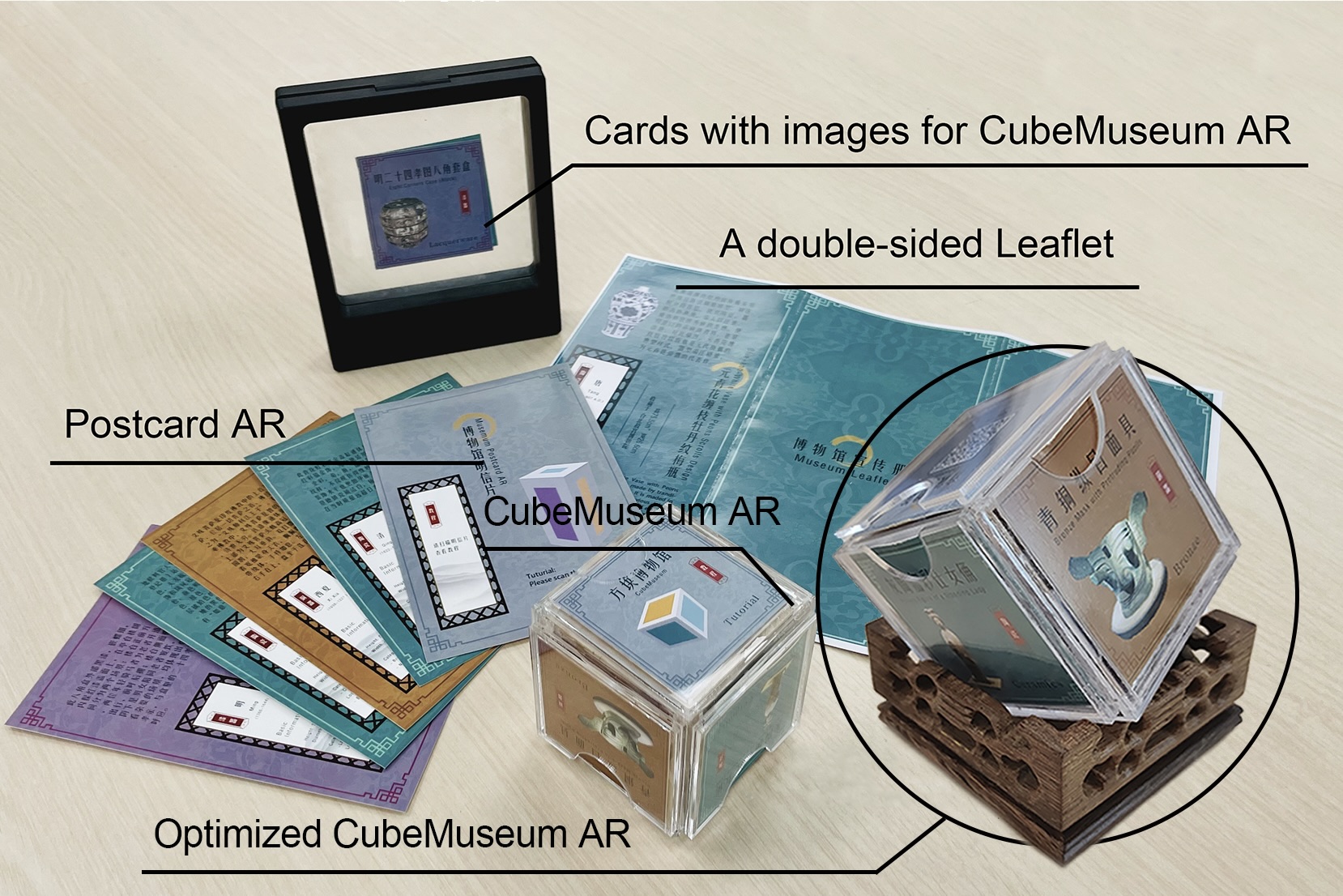CubeMuseum AR

Abstract
Museum artifacts are the main way for visitors to experience and learn about cultural heritage. Augmented reality (AR) allows for high interactivity and is increasingly applied in museums to improve tourists’ experience and learning. It also supports the extension of museum experience to outside of the physical museum space, contributing to the visiting trajectory and takeaway experience. In this paper, we present our design of two tangible AR interfaces for cultural artifacts: Postcard AR and CubeMuseum AR, followed by three user studies that evaluate and optimize the design. In Study 1, we conducted a within-subjects study (N = 24) that compares the two AR interfaces with a baseline condition (Leaflet). Our results demonstrate the positive effects of tangible AR interfaces on users’ motivation and engagement in learning cultural heritage. In Study 2, we further explored how to optimize CubeMuseum AR by adopting a user-centered design approach. Through the analysis of expert interviews (N = 7) and an online survey (N = 207), the results specify a series of requirements and design guidelines for tangible AR interfaces to be used as a learning tool and a hybrid gift. Based on the findings, the design of the CubeMuseum AR was optimized and evaluated in Study 3. A between-subjects user study was conducted (N = 32) to compare the optimized design with the initial design. The results verified the positive effects of gamified tangible AR interfaces on users’ motivation, engagement, and performance in learning cultural heritage. We present our design and evaluation results, and discuss the implications of designing tangible AR interfaces for cultural heritage learning and museum gifting.
People
Ningning Xu, Yue Li, Xingbo Wei, Letian Xie, Lingyun Yu, Hai-Ning Liang
Publications
Xu, N., Li, Y., Wei, X., Xie, L., Yu, L., & Liang, H.-N. (2023). CubeMuseum AR: A Tangible Augmented Reality Interface for Cultural Heritage Learning and Museum Gifting. International Journal of Human–Computer Interaction, 40(6), 1409–1437. DOI: 10.1080/10447318.2023.2171350
Award
CCVR 2021 First Prize